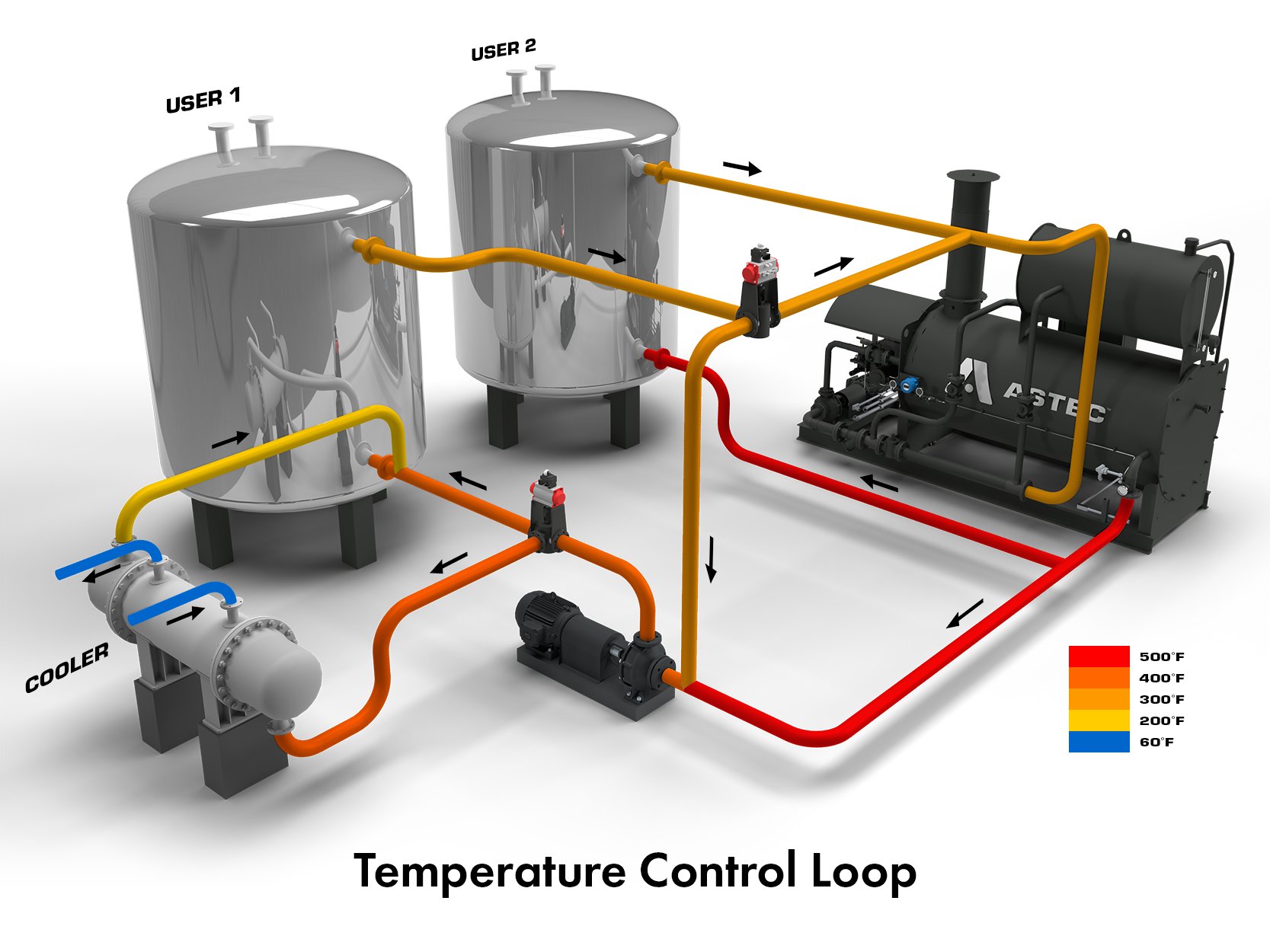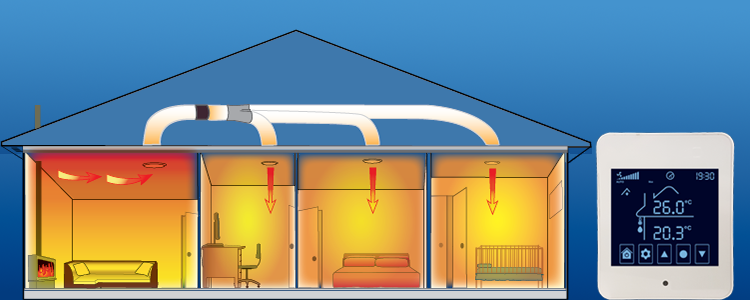Advancements in Heat Transfer Equipments: What You Need to Know for Ideal Performance
Advancements in Heat transfer systems are changing performance across various markets. Advanced materials like graphene and nanofluids promise substantial improvements in thermal conductivity. Meanwhile, the assimilation of IoT and maker understanding uses possibilities for real-time monitoring and boosted power effectiveness. Nevertheless, the landscape of thermal monitoring is rapidly advancing (DVS Heat Transfer Systems). Understanding these growths is necessary for attaining excellent system efficiency and sustainability in the future. What particular innovations are forming this makeover?
Emerging Materials for Improved Heat Transfer

Advanced Heat Exchanger Designs
While standard Heat exchangers have actually offered their function in various applications, progressed styles are now emerging to satisfy the enhancing needs for effectiveness and performance. These ingenious styles, such as plate, shell-and-tube, and finned-tube Heat exchangers, include boosted surface and enhanced flow patterns to increase thermal transfer prices. In enhancement, portable designs permit for minimized area requirements without endangering efficiency. Advanced products, such as composites and corrosion-resistant alloys, additionally enhance durability and efficiency under extreme conditions. Simulation innovations and computational fluid characteristics are increasingly utilized to improve these designs, making sure peak Heat transfer features. As industries look for to reduce power consumption and optimize outcome, the adoption of advanced Heat exchanger layouts is critical in achieving these objectives.
The Role of Nanotechnology in Heat Transfer
Nanotechnology plays a vital duty in boosting thermal conductivity within Heat transfer systems. By manipulating materials at the nanoscale, scientists have achieved considerable enhancements in energy performance. These innovations not only optimize performance yet likewise add to even more lasting energy services.
Boosted Thermal Conductivity
Substantial improvements in thermal conductivity have arised through the application of nanotechnology, changing Heat transfer systems throughout different industries. By including nanoparticles right into Heat transfer liquids and products, scientists have achieved impressive increases in thermal conductivity. These nanoparticles, such as carbon nanotubes, graphene, and metal oxides, boost the Heat transfer buildings due to their high surface area and distinct thermal characteristics. The resulting compounds show enhanced efficiency in applications varying from electronic devices cooling down systems to renewable resource modern technologies. The ability to tailor the dimension, shape, and make-up of nanoparticles enables for maximized thermal administration solutions. As a result, nanotechnology remains to play a pivotal duty in the growth of much more efficient and reliable Heat transfer systems, leading the way for improved industrial applications.
Energy Efficiency Improvements

Assimilation of IoT in Heat Transfer Systems
The combination of IoT in Heat transfer systems introduces the execution of clever sensors that enhance operational performance. These sensors enable real-time data monitoring, enabling prompt modifications and optimizations. This technological improvement has the possible to substantially enhance performance and power management in Heat transfer applications.
Smart Sensors Execution
As Heat transfer systems advance, the combination of clever sensing units through the Net of Points (IoT) has actually arised as a transformative approach. These sensors enable real-time monitoring of pressure, circulation, and temperature level rates, enhancing system effectiveness and reliability. By gathering and sending data, they promote proactive maintenance, decreasing the risk of system failures. Additionally, clever sensors add to power financial savings by refining operational criteria based on environmental problems. Their capacity to examine fads and anomalies enables informed decision-making, ensuring peak performance of Heat transfer systems. As markets progressively adopt this technology, the application of clever sensing units stands to change exactly how Heat transfer systems are taken care of, leading the way for greater sustainability and improved performance outcomes.
Real-Time Information Surveillance
Just how can real-time data monitoring improve the performance of Heat transfer systems? By integrating Web of Points (IoT) modern technology, Heat transfer systems can take advantage of continuous information collection from smart sensing units. This real-time tracking permits immediate evaluation of stress, temperature level, and flow rates, allowing operators to recognize inadequacies without delay. As a result, changes can be made to enhance efficiency, minimize energy click to investigate intake, and prolong devices life expectancy. In addition, anticipating upkeep can be executed, minimizing unforeseen downtime and pricey fixings. The capability to envision performance metrics via dashboards enhances decision-making, fostering an aggressive strategy to system management. Inevitably, real-time data checking not just boosts functional effectiveness but also adds to sustainability goals within commercial procedures.
Power Effectiveness and Sustainability Trends
Energy performance and sustainability patterns are reshaping the landscape of Heat transfer systems, driving innovation and conformity across numerous sectors. Organizations are significantly focusing on energy-efficient styles to lower functional prices and reduce ecological effects. The integration of eco-friendly energy resources is becoming extra widespread, enabling Heat transfer systems to operate sustainably while satisfying governing requirements. In addition, improvements in materials and innovations promote lower energy usage and enhance total efficiency. Lifecycle evaluations are also acquiring grip, enabling business to review the ecological influence of Heat transfer systems from manufacturing to disposal. This emphasis on sustainability not only supports corporate responsibility but likewise positions companies competitively in a market where customers significantly favor environment-friendly services. Consequently, energy efficiency and sustainability stay crucial factors to consider for future advancements in Heat transfer innovation.
Developments in Thermal Administration Solutions
While the need for effective Heat transfer remains to climb, developments in thermal administration options are emerging to attend to both performance and sustainability challenges. Advanced products, such as stage adjustment products and nanofluids, are being established to enhance Heat transfer effectiveness - DVS Heat Transfer Systems. These materials enhance thermal conductivity and permit far better temperature level policy in numerous applications. Furthermore, innovations like active thermal control systems are gaining grip, making it possible for real-time changes to manage Heat circulation successfully. These systems add to energy savings and reduce the ecological impact of thermal procedures. In addition, the assimilation of IoT in thermal administration facilitates surveillance and anticipating maintenance, making sure optimized efficiency and long life of Heat transfer systems. In general, these innovations represent significant strides toward more lasting thermal administration techniques
Future Instructions in Heat Transfer Innovation
Emerging innovations in thermal administration remedies indicate an appealing future for Heat transfer innovation. Scientists are increasingly concentrating on creating materials with premium thermal conductivity and boosted energy effectiveness. Developments such as nanofluids, which have hop over to here suspended nanoparticles, supply considerable improvements in Heat transfer efficiency. Furthermore, the integration of clever materials that adapt to differing temperature level conditions is getting traction, enabling more efficient and responsive systems. The increase of additive production strategies is also making it possible for the design of complicated Heat exchanger geometries that maximize liquid flow. The implementation of machine discovering formulas is anticipated to reinvent the optimization of Heat transfer systems, promoting anticipating upkeep and performance enhancement. Collectively, these developments are positioned to transform the landscape of Heat transfer innovations in different industries.

Often Asked Inquiries

Just how Do I Select the Right Heat Transfer System for My Application?
Choosing the ideal Heat transfer system includes reviewing application requirements, consisting of temperature level varieties, fluid buildings, and efficiency requirements. Analyzing system kinds, upkeep considerations, and cost-effectiveness likewise plays a vital role in making a notified decision.
What Are the Upkeep Requirements for Advanced Heat Exchangers?
Upkeep demands for sophisticated Heat exchangers generally include routine inspections, keeping an eye on for leaks, cleansing of surface areas, and ensuring ideal flow rates. Sticking to manufacturer standards guarantees reliable procedure and prolongs the equipment's life expectancy.
Exactly How Do Ecological Elements Affect Heat Transfer Performance?
Environmental variables considerably influence Heat transfer efficiency. Variations in moisture, air flow, and temperature effect thermal conductivity and convective Heat transfer, ultimately affecting system performance and requiring factor to consider during the style and procedure of Heat transfer systems.
What Safety Criteria Put On Heat Transfer Systems?
Security standards for Heat transfer systems normally consist of guidelines from organizations such as ASME and ASTM. DVS Heat Transfer Systems. These standards address materials, layout, and functional techniques to guarantee integrity, efficiency, and security versus threats in different applications
Exactly How Can I Repair Common Heat Transfer System Issues?
Fixing usual Heat transfer system issues entails checking for leakages, guaranteeing appropriate fluid flow, checking insulation stability, and confirming temperature level differentials. Recognizing these aspects can aid keep system effectiveness and avoid more problems.
Nanotechnology plays a vital function in improving thermal conductivity within Heat transfer systems. Considerable innovations in thermal conductivity have emerged with the application of nanotechnology, reinventing Heat transfer systems throughout numerous sectors. Innovations in thermal conductivity with nanotechnology have actually led the check method for remarkable enhancements in energy effectiveness within Heat transfer systems. Energy efficiency and sustainability fads are improving the landscape of Heat transfer systems, driving technology and compliance across numerous markets. The integration of IoT in thermal management promotes surveillance and anticipating maintenance, making sure enhanced performance and long life of Heat transfer systems.